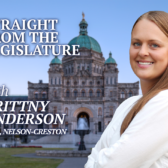Quebec, Atlantic provinces disproportionally benefit from hidden equalization says Fraser Institute
A number of federal programs distribute subsidies unequally among provinces, says a study released today by the Fraser Institute, an independent, non-partisan Canadian public policy think-tank.
The study Unseen Equalization: Provincial Subsidies in Federal Programs by David MacKinnon, a retired public servant and well-known commentator, spotlights six hidden forms of equalization, outside the official equalization program.
“Many of the federal programs containing hidden provincial subsidies disproportionately support provinces east of the Ottawa River, especially Atlantic Canada, at the expense of provinces in the west. Yet this phenomenon receives little attention and is poorly understood, even among experts,” MacKinnon said.
Culture programs
In 2009/2010, the most recent year that data was available, the federal government spent nearly $3.9 billion on culture-related activities. However, there was a marked disparity in spending across provinces. For example, Quebec topped the money list, receiving nearly $1.5 billion for cultural programs. On a per person basis, Quebec ranked second ($188 per person) behind only P.E.I ($191 per person) while B.C. ranked last ($53 per person).
“This is one area where Canadians should expect a reasonably consistent level of spending, but the Atlantic provinces and Quebec receive substantially more per person funding for culture programs than Ontario and the west,” MacKinnon said.
Immigration settlement
In 2010, B.C., Alberta and Saskatchewan experienced significant funding shortfalls, relative to immigration patterns. For example, B.C. received 13 per cent of settlement funding while welcoming 18 per cent of Canada’s immigrants. Conversely, Quebec also welcomed 18 per cent of Canada’s immigrants in 2010 but received 28 per cent of settlement funding.
“In the 1990s, immigrant support in Quebec was grossly overfunded by the federal government. The gap has closed somewhat, but bias in favour of Quebec persists,” MacKinnon said.
Employment Insurance
Benefits vary from province to province depending on regional unemployment rates, creating different thresholds for Canadians in similar situations.
“A self-employed graphics designer in Medicine Hat doesn’t get EI, but a self-employed fisher in Tignish does,” MacKinnon said.
Ontario, Alberta, Manitoba, Saskatchewan and British Columbia are “net contributor” provinces, meaning they give more to the EI program than they receive. Ontario workers and employers in 2010 paid more than 40 per cent of all EI premiums, and Alberta was the largest net contributor ($390 per capita). Quebec and all four Atlantic provinces remain net recipients. Newfoundland and Labrador is the largest net recipient, receiving $846 per capita in 2010.
Disproportionate federal employment as a subsidy
The geographic location of federal employees has a dramatic effect on the flow of federal funds. Prince Edward Island, for example, has the highest rate of federal employment relative to population (24 federal employees per 1,000 residents). Ontario has the lowest (3.4 per 1,000 residents), roughly 85 per cent lower than P.E.I. Of course, some categories of federal employees are bound geographically to regions (federal offices in the Ottawa area, Department of Fisheries and Oceans, naval facilities and foreign embassies).
“But the remainder of offices, and subsequently, employees should be spread evenly across the country, and any substantial deviations from such a pattern should be considered a form of subsidy,” MacKinnon said.
Airport ground rental arrangements
Airports pay rent to the federal government. In 2011, nine airports—led by Canada’s big four in Toronto, Montreal, Vancouver and Calgary—accounted for 96.9 per cent of rent collected by the federal government, while only accounting for 77.6 percent of total passenger traffic and 76.6 percent of total cargo handled by airports across the country. Therefore, these nine airports essentially subsidize smaller airports including P.E.I.’s Charlottetown Airport, which has not paid any rent and will not be required to make such payments until 2016.
This problem is especially serious for Pearson Airport in Toronto. Pearson handles 28.5 per cent of passenger traffic and 32.5 per cent of cargo for the national airport system, yet pays 48 per cent of the system’s total rental fees.
Regional economic development agencies
The federal funding of regional development strongly favours Quebec and Atlantic Canada, continuing a trend of disproportionate support for provinces east of the Ottawa River.
The Fraser Institute is an independent Canadian public policy research and educational organization with offices in Vancouver, Calgary, Toronto, and Montreal and ties to a global network of 86 think-tanks. Its mission is to measure, study, and communicate the impact of competitive markets and government intervention on the welfare of individuals. To protect the Institute’s independence, it does not accept grants from governments or contracts for research. Visit fraserinstitute.org.

























